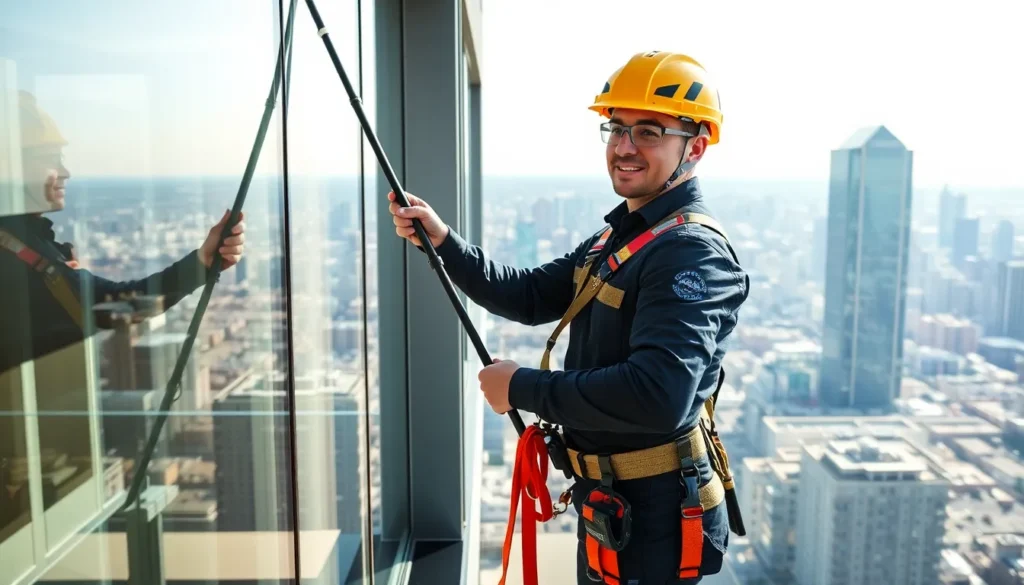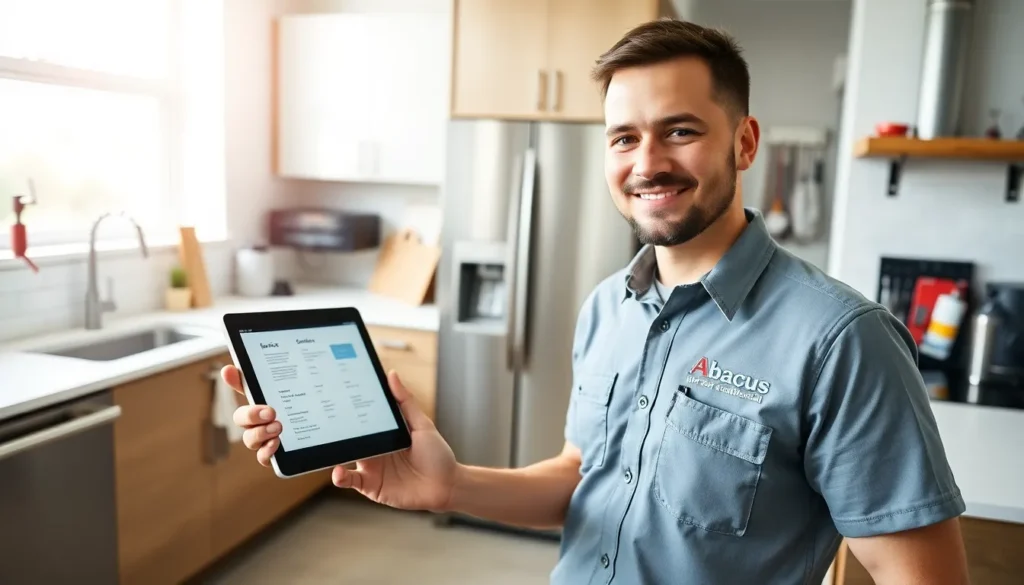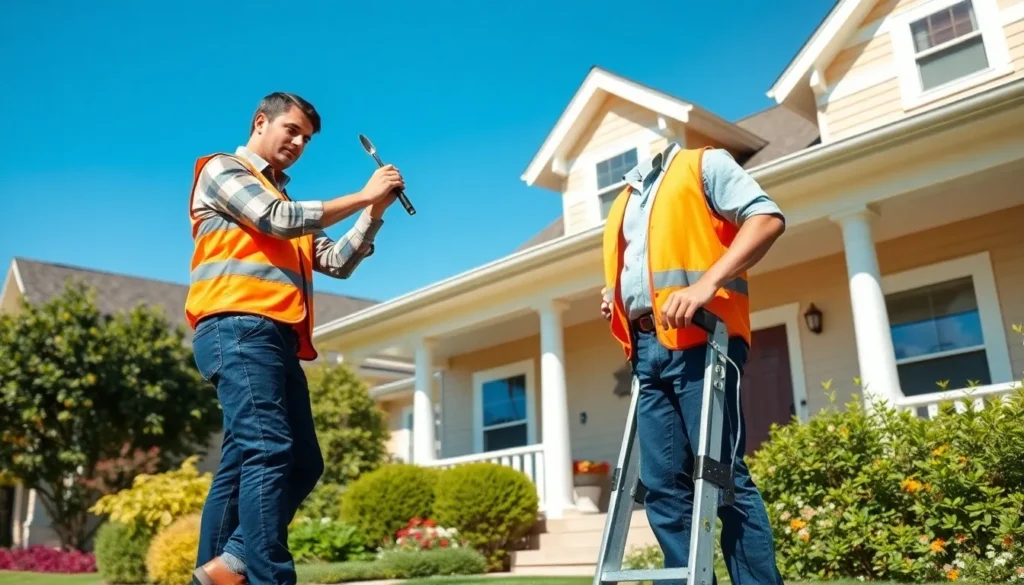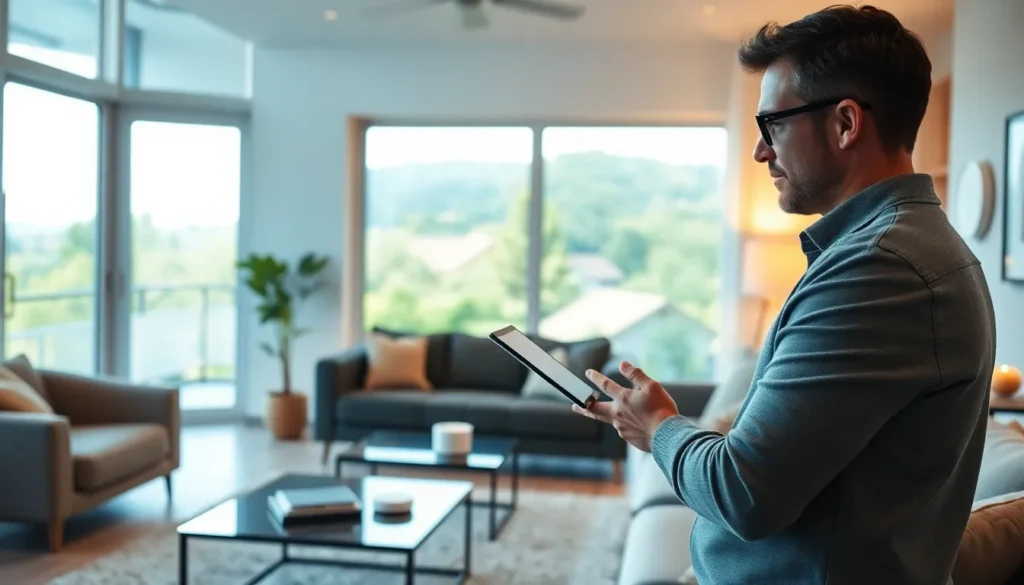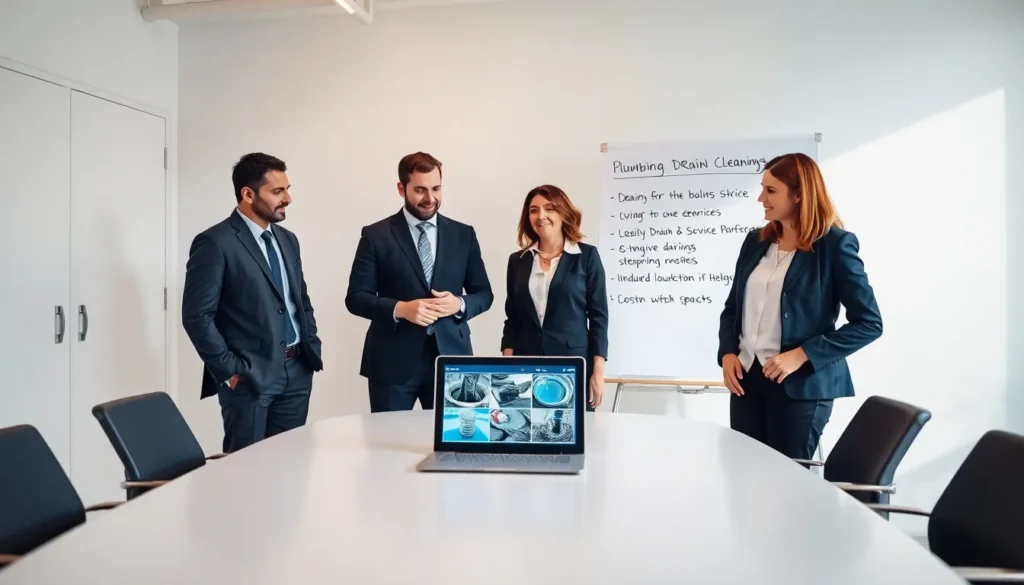In the world of home maintenance, HVAC, plumbing, and electrical systems are like the three musketeers—each one plays a vital role in keeping a household running smoothly. When one of them starts acting up, chaos can ensue. Ever tried taking a shower while your furnace is throwing a tantrum? Not fun!
Table of Contents
ToggleOverview of HVAC Plumbing Electrical
HVAC, plumbing, and electrical systems are crucial components for maintaining a comfortable and functional home environment. Each system supports the others, ensuring efficiency and reliability.
Definition of HVAC
HVAC stands for heating, ventilation, and air conditioning. This system controls indoor climate by regulating temperature and air quality. It includes components like furnaces, air conditioners, and ductwork. Professionals design HVAC systems to deliver consistent comfort while minimizing energy use. Efficiency ratings help homeowners choose the right units for their specific needs.
Importance of Plumbing in HVAC
Plumbing plays an essential role in HVAC functions. It provides the necessary water supply for heating systems, faucets, and fixtures. Proper plumbing ensures efficient water circulation, impacting the overall effectiveness of the HVAC system. When leaks occur, heating efficiency drops significantly, leading to higher energy bills. Additionally, drainage systems manage condensation from air conditioners, preventing water damage and maintaining a healthy indoor environment.
Role of Electrical Systems in HVAC
Electrical systems power the HVAC components, making them operational. Key elements include thermostats, wiring, and circuit breakers. Each of these components controls and monitors heating and cooling cycles. A well-functioning electrical system allows for precise temperature adjustments and maintains energy efficiency. If electrical issues arise, they can disrupt HVAC performance, potentially leading to costly repairs. Maintaining this system is vital for ensuring continuous comfort and functionality.
Key Components of HVAC Plumbing Electrical
Understanding the key components of HVAC, plumbing, and electrical systems is crucial for homeowners. Each system plays a distinct, yet interconnected, role in maintaining a comfortable living environment.
HVAC Systems
HVAC systems manage temperature and air quality in homes. Components include furnaces for heating and air conditioners for cooling. Efficient airflow through ductwork ensures consistent climate control. Thermostats regulate the system, providing user-friendly temperature adjustments. Regular maintenance of HVAC components prevents breakdowns and extends lifespan.
Plumbing Systems
Plumbing systems deliver and drain water throughout the home. Pipes transport fresh water to faucets and fixtures while removing wastewater efficiently. Proper installation of drainage systems prevents clogs and backflow issues. Additionally, plumbing supports HVAC functions, supplying necessary water for systems like humidifiers. Regular inspections catch leaks early, safeguarding home integrity.
Electrical Systems
Electrical systems power HVAC and plumbing components. Wiring connects thermostats and circuit breakers to essential devices. Proper grounding enhances safety, reducing electrical hazards. Surge protectors safeguard valuable equipment against power fluctuations. Regular electrical maintenance prevents outages and ensures reliable operation of HVAC and plumbing systems.
Installation and Maintenance
Proper installation and maintenance of HVAC, plumbing, and electrical systems ensure a comfortable living environment. Attention to these details prevents disruptions and malfunctions.
Installation Tips
When installing HVAC units, ensure adequate sizing for the space. Sizing affects efficiency and performance. Plumbers should check connections for leaks and use proper fittings to secure pipes. Following manufacturer’s guidelines for electrical components enhances reliability. Proper grounding is crucial for electrical systems, reducing the risk of hazards. Verify that systems comply with local codes to ensure safety and legality.
Maintenance Best Practices
Perform routine inspections on HVAC systems, checking filters for dirt and replacing them regularly to maintain airflow. Scheduling annual servicing for heating and cooling systems helps identify potential issues early. In plumbing, inspect pipes for corrosion and monitor water pressure to prevent leaks. Electrical systems benefit from periodic checks on wiring and connections to detect wear. Keep ventilation clear of obstructions to promote efficient airflow and improve indoor air quality.
Common Issues and Solutions
HVAC, plumbing, and electrical systems encounter various problems. Identifying these issues early can lead to efficient solutions.
HVAC Problems
Common HVAC problems include insufficient heating or cooling, unusual noises, and frequent cycling. Low refrigerant levels could cause hot air rather than cold, while dirty filters lead to airflow restrictions. Insufficient airflow may also result from duct leaks. Routine maintenance, such as changing filters monthly, helps prevent these issues. If unusual noises occur, this might indicate a need for professional servicing. Regular checks on the thermostat settings ensure proper temperature control.
Plumbing Issues
Frequent plumbing issues involve leaks, clogs, and low water pressure. A dripping faucet often signifies worn-out washers or seals. Clogged drains result from hair buildup or grease accumulation, demanding immediate attention. Regular cleaning of drains and ensuring proper disposal of waste can prevent clogs. Low water pressure might stem from sediment buildup in pipes, requiring periodic flushing to maintain water flow. Addressing these problems promptly avoids extensive damage to plumbing systems.
Electrical Troubleshooting
Electrical issues often manifest as flickering lights, tripped breakers, or faulty outlets. Poor connections and overloads commonly trigger these problems. To ensure safety, checking circuit breakers regularly is crucial. If outlets show signs of heat or burning, immediate replacement is necessary. Keeping appliances plugged into adequately rated outlets prevents overloads. Additionally, circuit testing can reveal hidden faults, aiding in troubleshooting. Regular inspections of wiring safeguard against potential electrical hazards.
Industry Trends and Innovations
The HVAC, plumbing, and electrical sectors are rapidly evolving through technological advancements. Innovations in these industries enhance efficiency and comfort in residential settings.
Smart HVAC Technologies
Smart HVAC technologies increase energy efficiency by using IoT-enabled devices. These systems allow homeowners to control temperatures remotely through mobile applications. Sensors monitor air quality and adjust settings automatically, ensuring optimal indoor conditions. Additionally, smart thermostats learn user preferences and adapt schedules accordingly, reducing energy costs. Examples include systems that integrate with home automation setups for comprehensive control.
Advances in Plumbing Solutions
Innovative plumbing solutions focus on sustainability and efficiency. Leak detection technology alerts homeowners to issues before significant damage occurs. Tankless water heaters provide hot water on demand, reducing energy waste associated with traditional storage units. Water-saving fixtures, like low-flow faucets and showerheads, conserve resources while maintaining functionality. Smart plumbing devices can track water usage, promoting more responsible consumption habits among users.
Innovations in Electrical Systems
Modern electrical systems benefit from advancements in energy management and renewable energy sources. Solar panel installations offer homeowners the chance to generate their own electricity, decreasing reliance on grid power. Smart meters give real-time feedback on energy consumption, helping users optimize usage and cut costs. Furthermore, LED lighting systems provide long-lasting, energy-efficient alternatives to traditional bulbs. Integration of these innovations enhances safety and reliability in home electrical networks.
Maintaining a harmonious balance among HVAC, plumbing, and electrical systems is crucial for any homeowner. These interconnected systems play vital roles in ensuring comfort and safety within the home. Regular maintenance and timely upgrades not only prevent disruptions but also enhance energy efficiency and sustainability.
As technology continues to evolve, embracing innovations like smart devices can further improve system performance and user experience. Homeowners who prioritize the upkeep of these essential systems will enjoy a more comfortable living environment while safeguarding their investment. Taking proactive steps today will lead to a more efficient and reliable home tomorrow.


